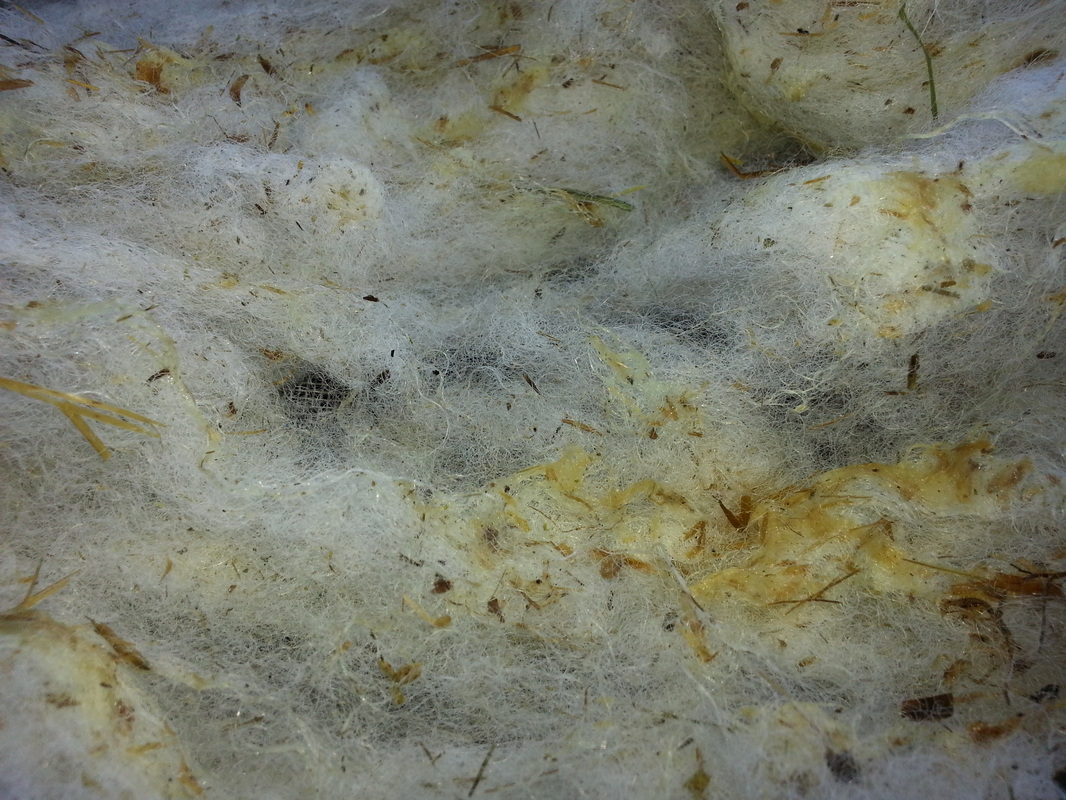Today I washed a fleece, or actually only about a third of it. It is a lovely fleece with lots of what is called crimp, the same sort of crimp you would imagine a hairdresser imparting in a fancy hair style, and the wool has wool fat or grease called lanolin. From what I have read and all the input I have from wool friends, the way to wash greasy wool is in super hot water with special soaps. I order one soap, Unicorn Scour, it is called, and followed the directions. Soap in hot water and soak the fleece, then repeat until the wool water is relatively clear. This took two washes in the special soap and two rinses in the same temperature hot water, too hot to put my hands in, so I used my sheep cane to move the fleece about in the water. I poured the water out on the deck hoping to wash it at the same time. The lanolin is compostable, being a biodegradable animal product naturally occurring.
But even after all that it appears that there was lanolin coating some of the fibres. I am wondering if I have to wash it all over again. I will wait and see how it looks when it is totally dry. There is still a ton of hay and straw in it. The big pieces should be fairly easy to pull out and the small bits may come out in my brand new Pat Green picker, a device that separates the wool fibres and cleans debris out. Then I might card the wool in my antique carder and make a bat if it is clean enough. This is all new to me and this is the first real fleece I washed, well a third of a fleece, because this fleece is massive. The wool is white and very soft though, so I am curious to see how it will improve with picking.
There are also combs one can use to separate the fibres. Apparently, experts can do four "passes" with special combs and remove the worst debris from the wool. I may have to find these combs. Once the wool is clean I can choose to dye it or leave it as is for others to dye or use naturally. This is great fun so far, much work for a little bit of wool and after all that preparation, it still has to be spun into yarn and then knitted or crocheted into a garment. Another option is to felt it and then make a garment or cut and sew the felt. That would take a lot less time than spinning and knitting, I am thinking, but working with wool is an art and all art takes time. The wool is in the porch tonight on my drying rack, which is a window screen from my last house. I knew there was a reason those screens made it to the farm. I just didn't know why at the time.
So, what do you think of this mess? Wait until the next process and then the next and the next and see how it progresses. This is my first try at washing wool, so do not be too critical please. I am learning. Sigh.



 RSS Feed
RSS Feed